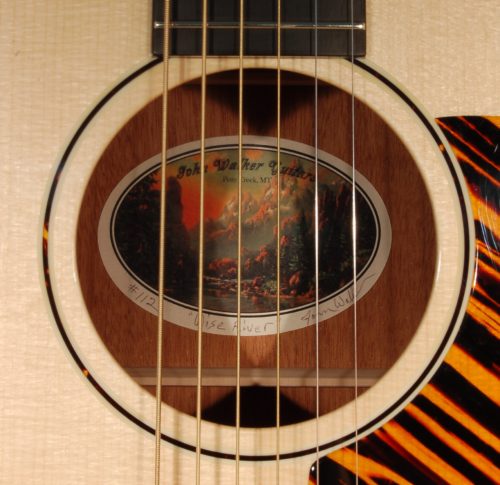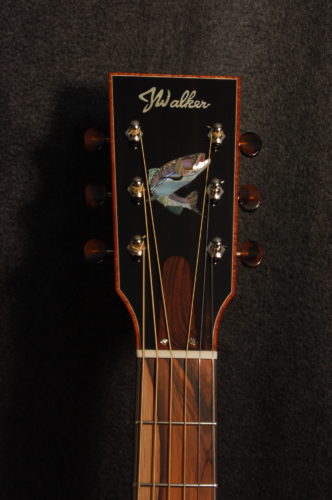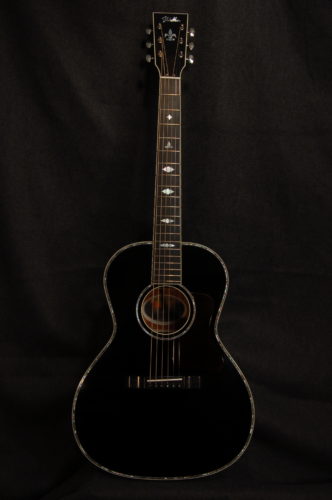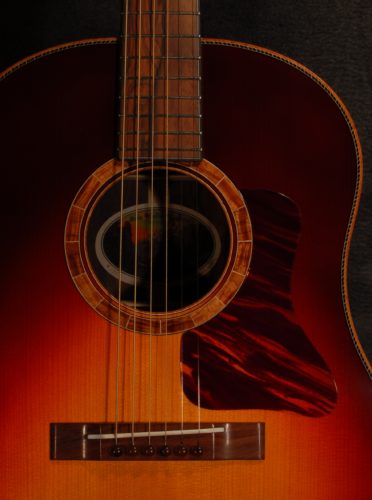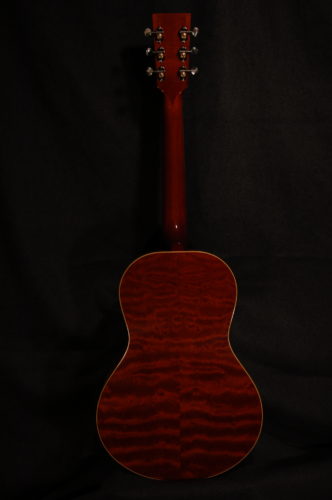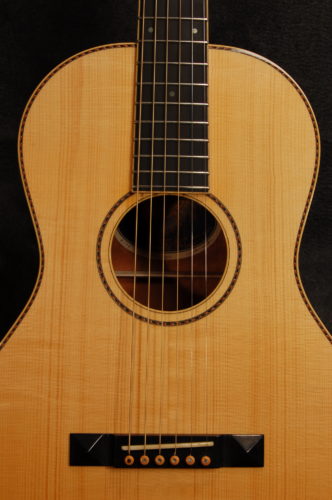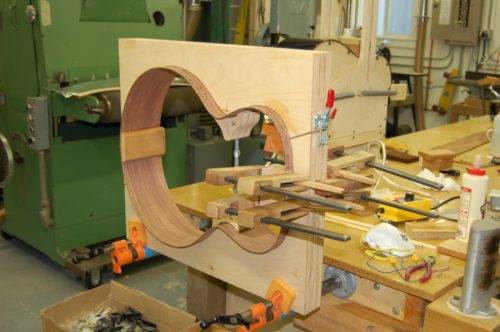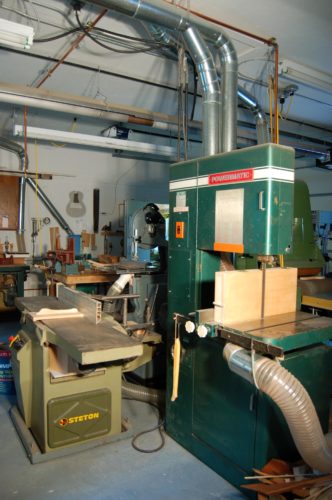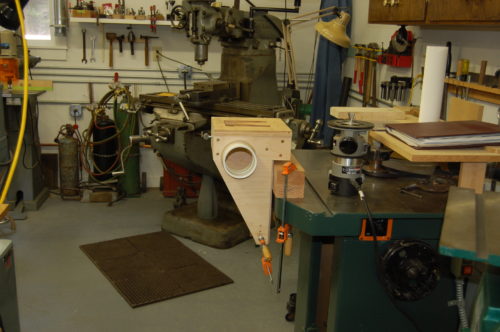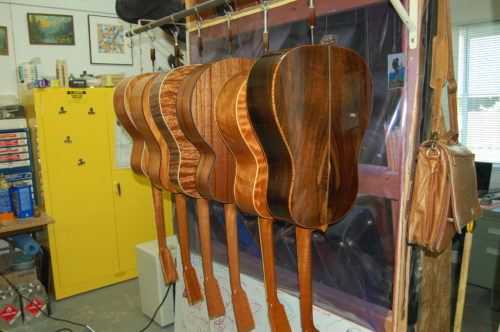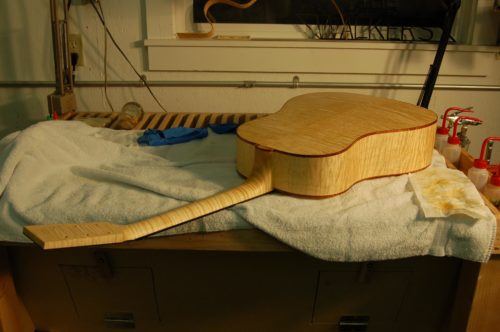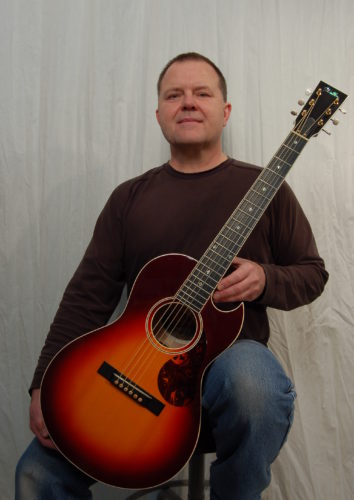One more for the “What Took Us So Long?” file… John Walker has been building guitars for a good long time, helping to establish the Gibson Custom Shop in Montana, starting at the ground floor in the creation of Tacoma Guitars and working right here in Seattle alongside our good friends Michael Gurian and Steve Andersen, before setting up his own shop, John Walker Guitars, back in western Montana, surrounded by mountains and the streams and creeks that bestow his guitars their names: Gus Creek, Clark Fork, Lolo Creek, etc. We ran into John at the La Conner Guitar Festival, way back in May, and have been kicking ourselves ever since for not getting around to featuring him in the Bench Press, and now we finally get to check that one off our To Do List…
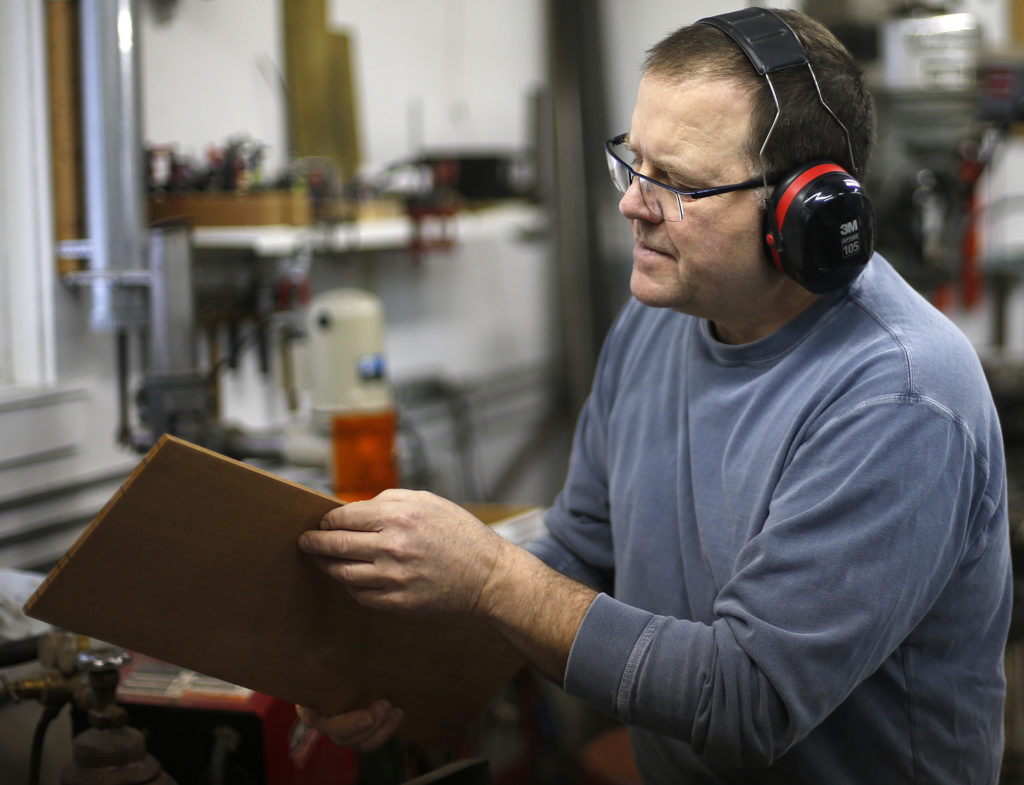
Photo: Tommy Martino
Fretboard Journal: What’s on your bench right now?
John Walker: I am just starting a new batch of six guitars. It is a mixture with four different models, two maple, two mahogany, two rosewood, two different scale lengths, one left-handed, one 12-fret, three sunbursts and a custom color. That’s a little more variety than usual, but should keep it interesting.
FJ: Tell us about your shop…
JW: John Walker Guitars is located in western Montana, 25 miles west of Missoula. The shop sits next to Gus Creek. Gus Creek runs into Petty Creek, which is also the name of the road we are on. Petty Creek in turn flows into the Clark Fork River. When we purchased this property in 2004, it already had a shop building in place. The shop was insulated but needed wiring and heat, etc. It is shaded by Engelmann Spruce to the south and looks out at Petty Mountain to the east.
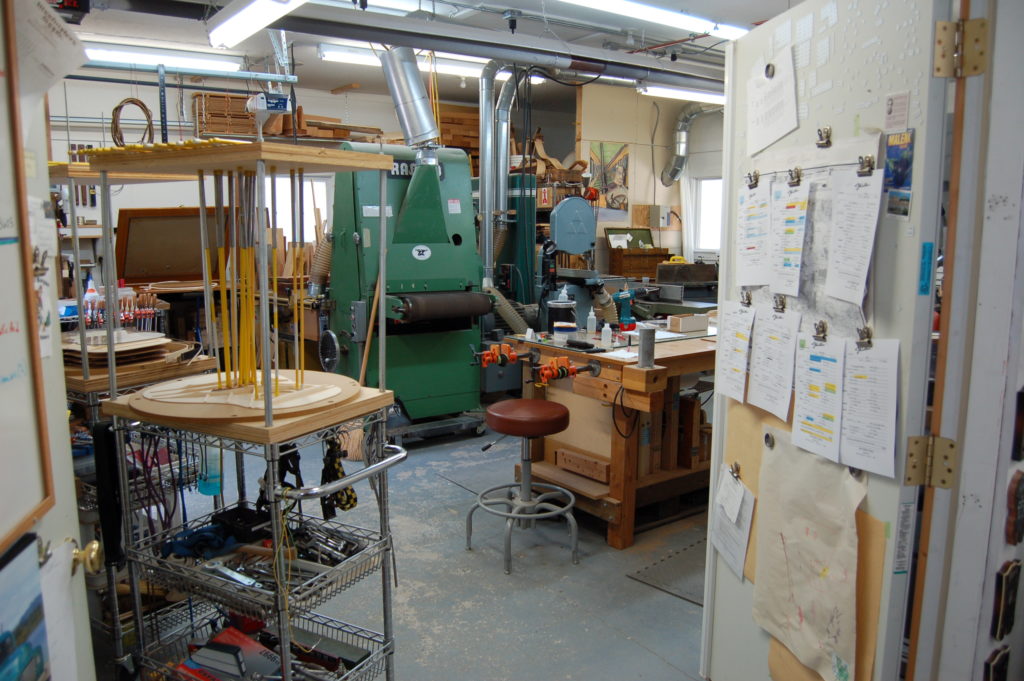
I purchased most of my equipment used in Washington. There is a great resource there called Coast Woodworking Equipment. I have this fantastic Ramco wide belt sander that I got from Steve Andersen. It was originally Michael Gurian’s, but when Michael was selling it I didn’t have a place for it so Steve bought it. He never set it up so when I got my own shop he offered to sell it to me. That and my Bridgeport mill are the coolest tools in the shop.
FJ: What is it about Montana’s rivers and streams that inspires you? Do you have other inspirations or influences?
JW: I grew up on a river in Minnesota called the Red River of the North. I loved hanging out down by the river–bonfires, fishing and exploring. So I don’t think it is just Montana rivers, or even simply rivers. Something draws me to the water; lakes and oceans work too! But Montana rivers are pretty awesome.
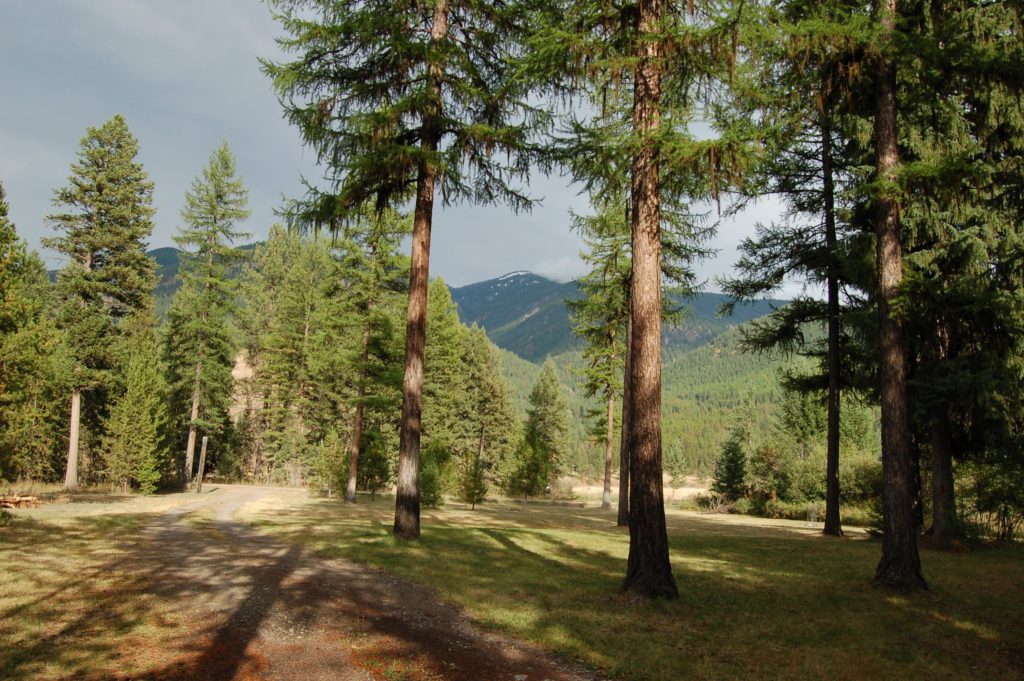
I think that all of the beauty that surrounds me definitely is inspiring. I have a wonderful wife and family; together we spend a lot of time in the forests here around the shop.
FJ: You’ve “done time” in the Gibson Custom Shop and working alongside Steve Andersen in his shop. What can you tell us about how those experiences have influenced the work you’re doing now?
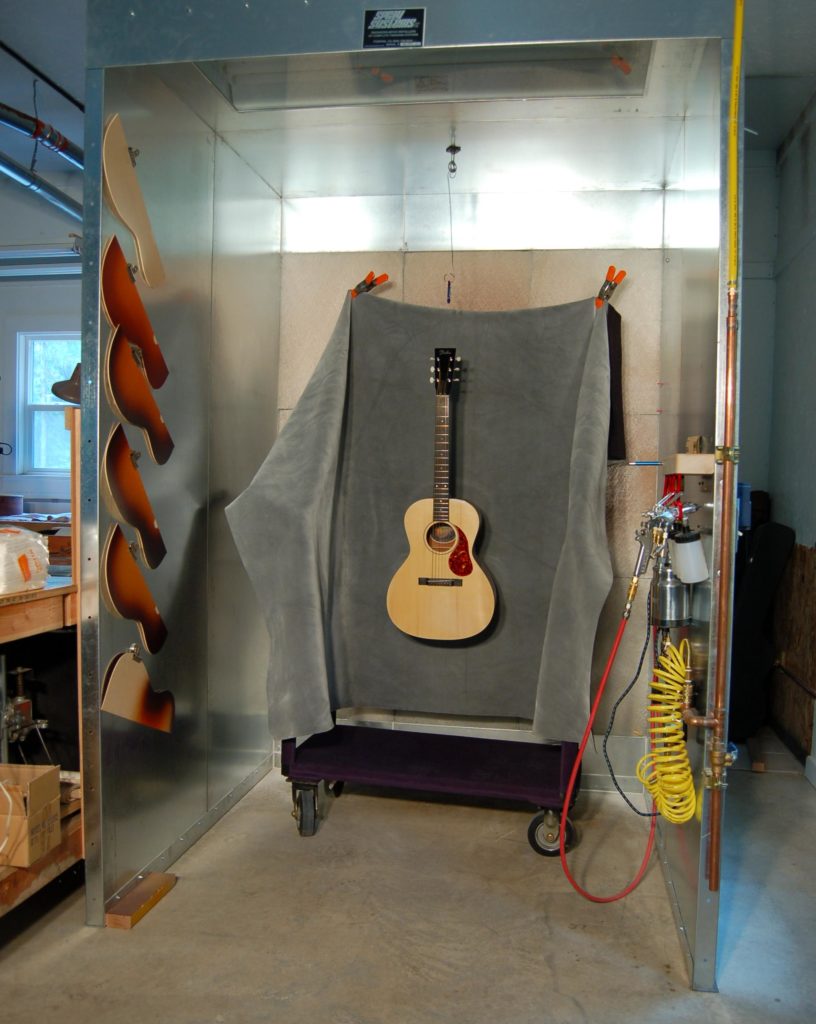
JW: I was very fortunate to be in the right place at the right time with Gibson. When they decided to build guitars in Bozeman most of the existing crew wanted very little to do with guitars. I was about the newest person in the shop and I basically raised my hand and said, “Pick me!” I worked with Ren Ferguson on researching and introducing models. I was building prototypes and figuring out processes. There were a few stores and artists that wanted things a certain way, and it was very difficult to get them through the regular production process with the required changes. So I started shepherding special guitars through the plant and eventually started building them for special orders, and the Custom Shop was born! The success of the Custom Shop meant more employees, more employees meant more management and less building for me. So I began to look for other opportunities.
In December, 1995 I left Gibson to help Young Chang North America start a new company that didn’t even have a name yet. The next four years were spent developing Tacoma Guitars.
Then my friend Michael Gurian asked me to manage his shop. After working with these two big corporations I jumped at the chance to be in a smaller setting. Michael is a tornado of knowledge and energy. Marquetry, lasers, centerless grinders, files…on and on. The learning and challenges were incredible.
Where I learned the most though was in Steve Andersen’s shop. It’s funny in a way because he hired me with the idea that I could help develop his processes to increase his production. I guess we did that, but in the process I learned what could be done in a one man operation. I had never worked with anyone that actually did it all before. Working with Steve gave me an appreciation of the business as a whole.
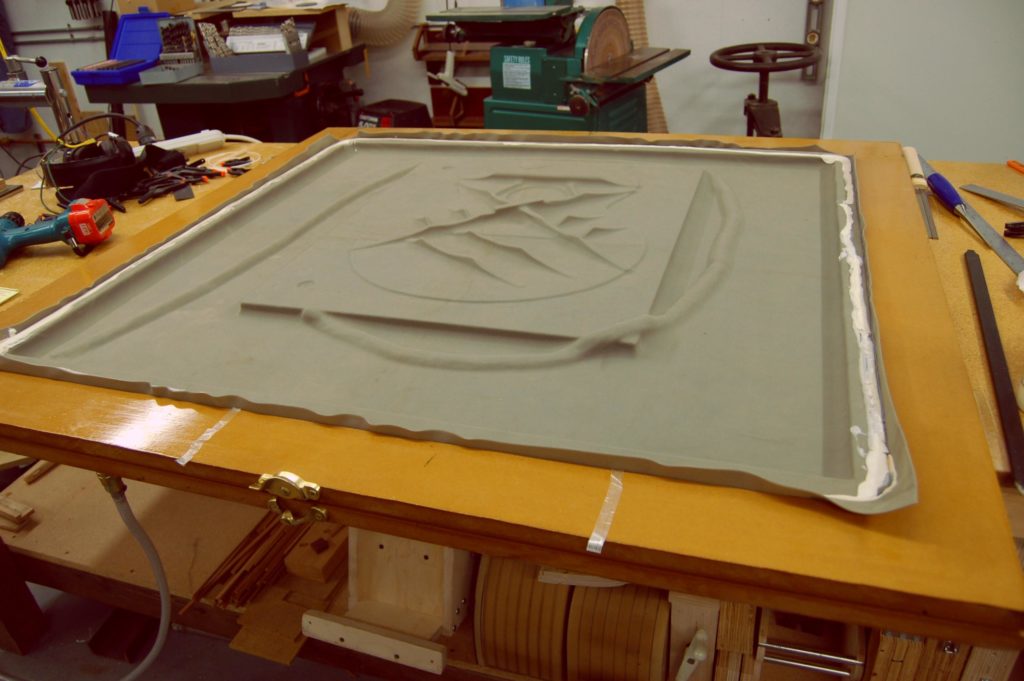
FJ: Any interest in building archtops these days?
JW: If I could go back in time and work with Steve again I would, but archtops are just different enough that it doesn’t fit in my operation.
FJ: Do you have a favorite guitar that’s crossed your bench?
JW: Since I don’t do repair work the only guitars that cross my bench are the ones that I have built. I try not to play favorites with these babies but…I am partial to the slope-shouldered dread. I recently finished one that I actually do like…a lot.
It’s Brazilian rosewood with a red spruce top, koa binding and a new version of my jumping rainbow trout inlay. I think it sounds good, too.
FJ: Do you have a particular philosophy about wood/materials?
JW: The older the better? I don’t know if that’s right but I do like to have the wood in the shop as long as possible. In the case of neck wood, I like to process it in steps over the course of years. Allowing it to adjust to the release of tension slowly. Most of the tops that I am using have been stickered in the shop for 5-10 years.
FJ: Are there any upcoming projects that you’re particularly excited about?
JW: I am really looking forward to returning to the La Conner Guitar Festival in May. Last year was very successful and the show is so well run that it is actually enjoyable!
